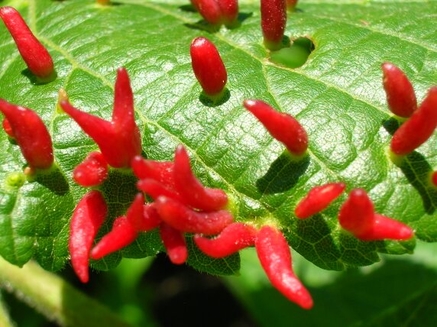 |
 |
 |
 |
 |
 |
 |
 |
|
 |
 |
 |
07 Symbiosis and altruistic behaviour
|
| Menu | back |
The familiar mechanisms of the theory of evolution break down when it comes to explaining the development of symbiosis and altruistic behaviour. Symbiosis is when both parties benefit from cooperation. Altruistic behaviour is when one of the parties serves the other and thereby even accepts disadvantage.
The greater part of the biomass on the earth is made up of symbiotic systems. A large proportion of trees and bushes relies on pollination by other creatures, mostly insects. Then there are the lichens, a symbiotic life partnership between a fungus and green algae or cyanobacteria. Peter Raven from the Missouri Botanical Garden reports that when a plant dies out, ten to thirty others also become extinct (1).
|
Some examples of symbiosis: |
|
|
|
The pollination of flowering plants by insects, whereby the insects receive nectar as nourishment.
|
|
|
Ants protect aphids and receive sugar water in return.
|
|
|
Mycorrhizal fungi take carbohydrates from trees and orchids and give minerals and water from the earth in return.
|
|
|
The transportation of plant seeds by humans and animals, where the fruits are eaten and the seeds are discharged at a place distant from the plant.
|
|
|
Many sessile, shallow water-living invertebrate sea creatures such as fire coral, most anemones and giant clams live with photosynthetic zooxanthellae.
|
|
|
All mammals are absolutely dependant on gastrointestinal bacteria (e.g. escherichia coli).
|
|
|
Lichens are a symbiotic structure made up of algae and fungi, where the algae produce carbohydrates by photosynthesis. These are absorbed by the fungi, while the fungi provide the algae with water and nutrient salts.
| |
Altruistic behavior by the oak towards the gall wasp:
The gall wasp lays its eggs on the oaks leaves. The oak leaf then forms a small pod for the egg. The egg matures in this pod until finally a small caterpillar hatches. This caterpillar can then feed on the nutritious cells on the inside of the pod and is, at the same time, protected from birds. When it has grown large enough, it leaves its little house, pupates and becomes a wasp, which, in turn, will lay eggs on the leaves of the oak.
|
 |
|
These small envelopes formed by the oak and other tree species are called galls. These galls are not only caused by gall wasps but also by other insects and mites. The creatures that cause the galls are not the only ones to benefit from them; parasitic fungi and bacteria do so as well.
The galls are nodule type growths, which are of no benefit to the plant itself. It is astonishing to what extent they are tailored to the necessities of the life of the animals and plants concerned. Yet various animals are able to trigger the formation of galls on the same plant, while the galls themselves develop different structures. This is not, therefore, in any way a general irritative effect as a reaction to the egg being laid, to a sting or the like (2).
|
Eriophyes tiliae (mites) forms the lime nail gall or bugle gall. |
|
|
The mechanisms of the theory of evolution would hardly support the development of galls, as they quite clearly entail disadvantages for the host plant. The complicated process of forming galls like this would, from an evolutionary theoretical perspective, more likely be selected out than advanced.
These 08 | Menu |
| back |
(1) Yvonne Baskin, The Work of Nature: How the Diversity of Life Sustains Us, Island Press, Washington D. C., 1997, pages 3637.
(2) Paul Lüth, Der Mensch ist kein Zufall, DVA, 1981, pages 188190.
(Image) http://en.wikipedia.org/wiki/Eriophyes_tiliae_tiliae
|
Comment this Site!
Brad wrote:
Perhaps the oaks helps Gall Wasps so they can eat carpenter ants or other little insects that would cause more harm to the tree than the galls... That would make this relationship a symbiotic one right?
To be truly altruistic, The oak tree must sacrifi
|
 |
 |
 |
 |
|


